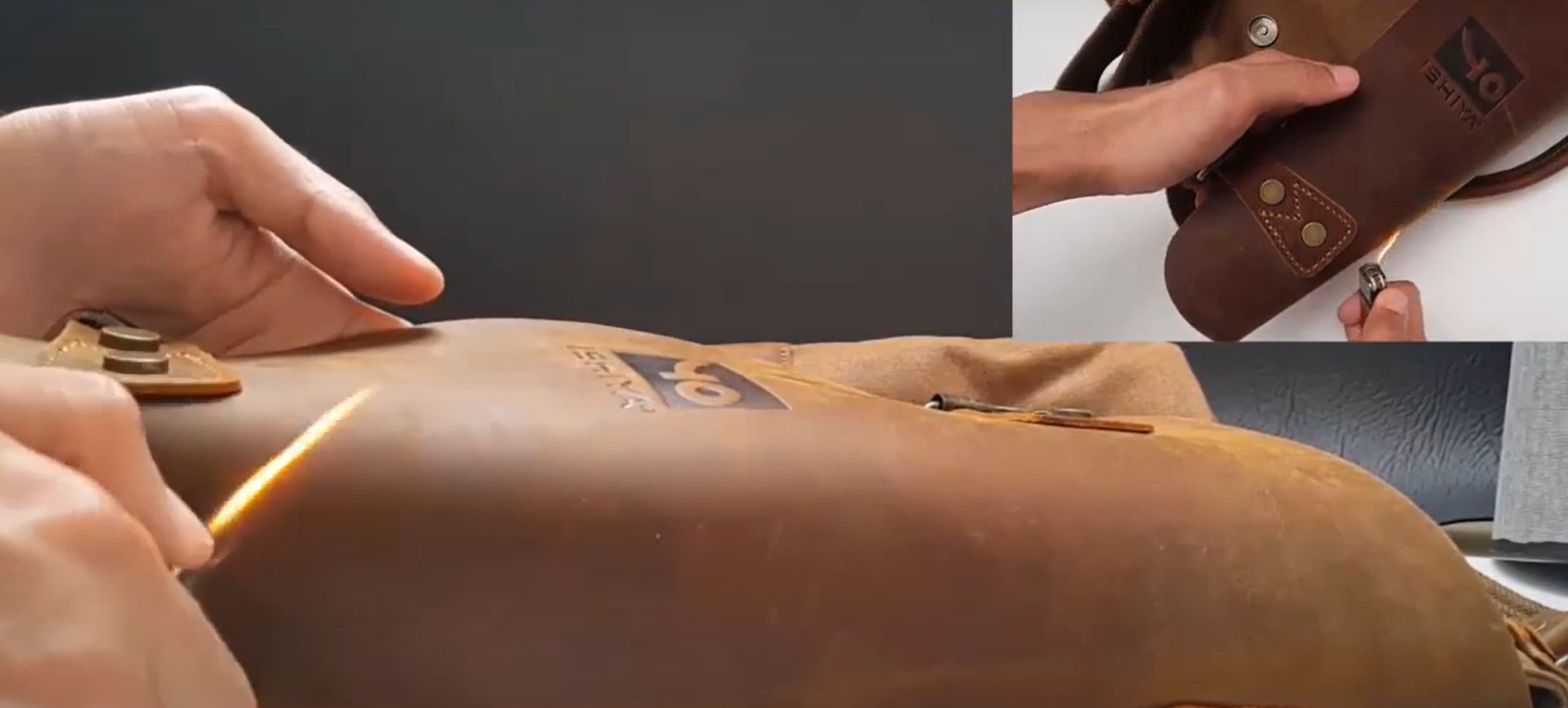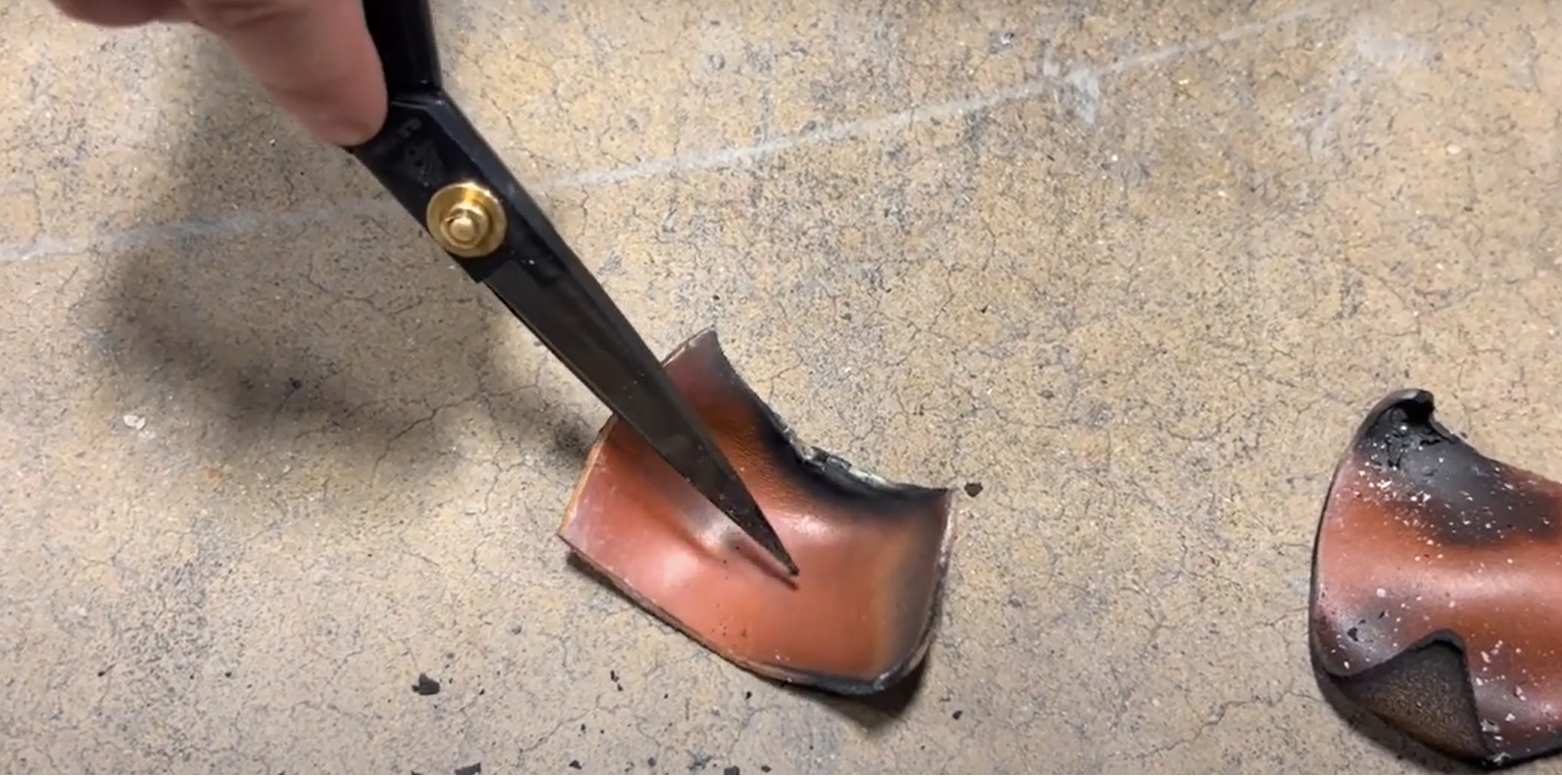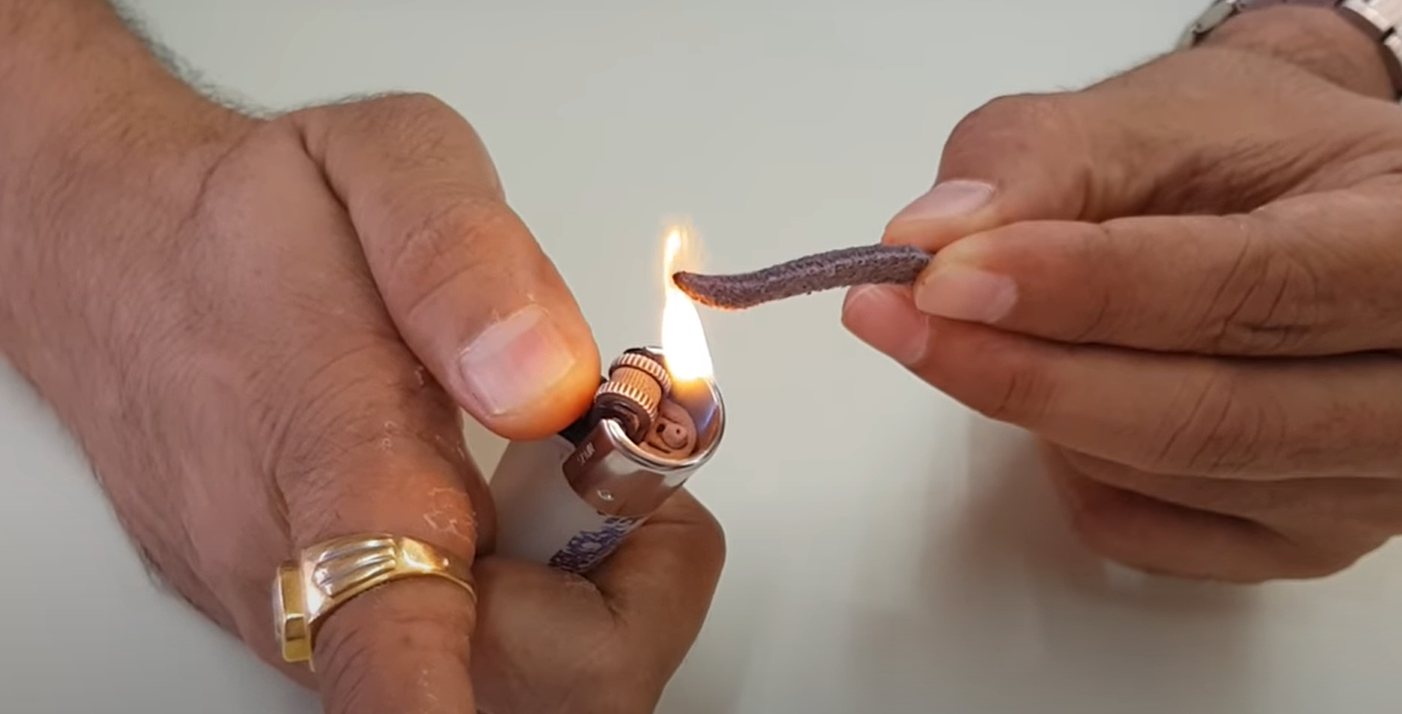Leather is often considered a luxurious and stylish material, but is it flammable? In this ultimate guide, we will answer all of your burning questions about leather and fire safety. We’ll discuss the flammability of different types of leather, how to treat leather if it is exposed to flames, and more. By the end of this article, you’ll be able to make informed decisions about whether leather is right for your next project!
Leather Fire Protection Standards
Leather is used in many industries and products, from clothing to furniture. Because of this, it’s important to know the fire protection standards for leather so that you can make the best choices for your home or business.
Leather may not be specifically mentioned in such standards, however, there are several references to “upholstered furniture” and “combustible coverings”.

Upholstered furniture includes any piece of furniture that is padded or has a soft surface, such as a couch, chair, or ottoman.Combustible coverings are defined as any material that can catch fire and burn easily. Depending on type, leather can meet either of these definitions.
The restrictions are especially strict in the aviation industry. Since aircraft are often carrying large numbers of people and valuable cargo, the materials used in their construction must meet very high fire safety standards.
Using natural leather in the aviation industry is limited, so you’ll mostly come across tanned synthetic leather. As you can see, a lot of faith is put into the fire retardant treatment of these materials.
In order to be used in public buildings and certain industries, leather upholstery must be treated with a flame retardant chemical. This treatment will usually make the leather less flammable, but it is still possible for it to catch fire and burn. [1]
Flammable Properties of Natural Leather
Now that we know how it is important for leather to be treated in order to meet fire safety standards, let’s take a look at the flammable properties of leather itself.
You’ve got yourself a new leather couch and you’re feeling pretty good about it. But then someone asks if leather is flammable and you start to worry. Is your new couch going to burst into flames? Well, the answer is both yes and no. It all depends on the type of leather. Let’s take a look at natural leather first.
Natural leather comes from animal skin that has been treated with chemicals and oils. This makes it more resistant to fire than other materials. However, it is still possible for natural leather to catch fire if it is exposed to high temperatures or direct flames. So, while natural leather is not as flammable as other materials, it’s still important to be careful around open flames.
Why is Natural Leather Fire Resistant?
But why is natural leather more fire resistant than other materials? The answer has to do with both the natural properties of the leather, and the tanning process.

Natural properties of leather
Leather is made up of animal skin and animals’ skin is not much different from our own human skin. Without getting too much into the scientific details, animal skin is composed of fibers, proteins, and a small amount of fat. The structure of the skin fiber is what makes leather so tough and durable. But it also happens to be the reason why leather is fire resistant.
Yes, in addition to being strong, the collagen fibers in animal skin are also relatively heat resistant. They won’t catch fire easily and will only start to burn at very high temperatures (around 400 degrees Celsius).
Natural fats in the skin also play a role in fire resistance. When exposed to heat, these fats act as a protective barrier and make it harder for the fire to spread through the leather.
By far the biggest reason why leather resists heat so well however, is its porous nature. Leather is full of tiny pores, which absorb and retain moisture. When exposed to heat, the water inside the pores will resist the heat, and help to keep the leather from burning.
Still, all those factors are a huge reason as to why natural leather is more fire resistant than synthetic materials. The natural properties of the leather make it more resistant to heat. But there is another reason why leather is more fire resistant… [2], [3]
Tanning process
Flame-resistance can be further influenced by the tanning. Tanning is a process that preserves the skin and makes it more durable. The most common types of tanning is vegetable and chrome-tanning.
Vegetable tanning
Vegetable tanning is a traditional and eco-friendly method of tanning leather. It uses tannins, which are naturally occurring compounds found in tree bark and other plants. The process can take weeks or even months, and the end result is a beautiful, durable piece of leather.
Because of the natural process, vegetable-tanned leather is more breathable and has a better ability to absorb moisture. And this makes them more flame resistant.
Chrome tanning
Chrome-tanning is a process that uses chromium sulfate and other chromium salts to tan hides and skins. This method is considered much more efficient and produces a quality product. However chrome-tanned leather is often treated using hexavalent chrome which is a chemical that can actually make leather more flammable.
Luckily, the ingredients used in chrome-tanning can be altered a little to make the process more environmentally friendly and the leather less flammable. If you are looking for a flame-resistant chrome-tanned leather, make sure to look for one with flame retardants added to the chromium sulfate solution.
To further increase its flame-resistance, you can treat the surface with a special coating or apply a fire retardant chemical treatment. These methods will make the leather more resistant to heat and flames, but they won’t make it completely fireproof. [2], [3]
Flammable Properties of Fake Leather
Now, what about fake leather? Fake leather, also called synthetic leather, is made from plastic or other man-made materials. It’s often used in furniture, clothing, and accessories.
Because it lacks the natural oils found in real leather, fake leather is much more flammable. Let’s take polyurethane for example.

Polyurethane is a type of synthetic leather that’s made from plastic. It’s often used in furniture and clothing because it’s cheaper than natural leather. However, polyurethane is much more flammable than natural leather. In fact, it’s one of the most flammable materials out there. The manufacturing process of fake leather also uses toxic chemicals that can emit harmful fumes when burned.
When exposed to fire, fake leather will melt and stick to your skin. This can cause serious burns that may require medical attention.
Fake leather is not a safe material to use in any situation where there is a risk of fire. If you must use it, be sure to keep it away from any open flames or heat sources. [2]
What Happens When Leather is Exposed to Flames?
Leather is not a highly flammable material, and won’t necessarily catch fire when exposed to open flame but it may burn. The rate at which leather burns depends on the type of leather – natural or synthetic – and how it’s been treated.
As you may know by now, synthetic leathers, on the other hand, are made from plastic polymers that are much more flammable than natural fibers. As a result, they will usually ignite immediately when exposed to flames and burn more quickly than natural leathers. [2], [3]
At What Temperature Leather Does Ignite
Leather ignites at temperatures higher than 390 degrees Fahrenheit. The exact temperature depends on the type of leather, as well as how it’s been treated.
For example, untreated natural leathers will ignite at lower temperatures than treated natural leathers. Similarly, synthetic leathers will usually ignite at lower temperatures than natural leathers.

Quality of the leather itself matters as well. Cheaper leathers are more likely to have loose fibers and a lower ignition point. More expensive, higher quality leathers will have a tighter weave and a higher ignition point. [2], [3]
Flammability of Leather
This table compares the flammability properties of leather, a commonly used material in the production of various products. Understanding the flammability characteristics of leather is crucial for safety considerations and compliance with fire safety regulations.
| Indicator | Leather Type | Ignition Temperature (°F) | Flame Spread Index | Heat Release Rate (BTU/hr) |
|---|---|---|---|---|
| Aniline Leather | Unprotected Aniline Leather | 500-600 | 20-100 | Variable |
| Protected Aniline Leather | 500-600 | 20-100 | Variable | |
| Semi-Aniline Leather | Unprotected Semi-Aniline Leather | 500-600 | 20-100 | Variable |
| Protected Semi-Aniline Leather | 500-600 | 20-100 | Variable | |
| Top Grain Leather | Variable | 20-100 | Variable | Variable |
| Full Grain Leather | Variable | 20-100 | Variable | Variable |
Explanation:
- Indicator: Describes the specific type of leather.
- Leather Type: Differentiates between variations within each leather type.
- Ignition Temperature (°F): The minimum temperature required to ignite the leather.
- Flame Spread Index: The measure of how rapidly the flame spreads across the surface of the leather.
- Heat Release Rate (BTU/hr): The rate at which heat energy is released during combustion.
The table includes various types of leather, including Aniline Leather (both protected and unprotected), Semi-Aniline Leather (both protected and unprotected), Top Grain Leather, and Full Grain Leather. The ignition temperature, flame spread index, and heat release rate are provided for each leather type, where available.
Please note that the specific numerical values for ignition temperature, flame spread index, and heat release rate may vary depending on the specific composition and treatment of the leather. This table serves as a general guide and should not be considered exhaustive or definitive. It is always recommended to consult the manufacturer or relevant safety regulations for accurate and up-to-date information regarding the flammability properties of leather.
FAQ
How can you tell if leather is fire-retardant?
The best way to tell if leather is fire-retardant is to look for a label or tag that says the product is “fire-retardant.” If you can’t find a label, you can contact the manufacturer to ask if the leather is fire-retardant.
Another way to test if leather is flammable is to do the “flame test.” Cut a small piece of the leather off and hold it with metal tweezers over an open flame. If the leather ignites and burns, it’s not fire-retardant.
What happens if you burn leather?
Leather is made of protein fibers, so when it’s burned, it will smell like burning hair. The fire will cause the leather to shrink and harden, and the surface will become brittle. If you want to preserve the leather, you’ll need to extinguish the fire quickly and cool the leather down slowly.
Unfortunately, once leather has been burned, there’s no way to repair it. You’ll just have to hope that the damage isn’t too bad and that you can still use the piece of leather.
What leather is fire resistant?
Natural leather wins when it comes to fire resistance mainly because it has a high moisture content. The moisture inside the leather fibers makes it more difficult to set on fire.
Still, there are several types of leather that are more resistant to fire than others. For example, vegetable-tanned leather is less likely to catch fire and burn than chrome-tanned leather. Some manufacturers also treat their products with chemicals that make them more fire resistant. However, it’s important to remember that no type of leather is completely fireproof.
Is genuine leather flammable?
Genuine leather is flammable to some extent. It is a natural material made from animal hides, and like any organic material, it can burn when exposed to a flame or intense heat.
What causes leather to catch fire?
Leather catches fire when it is exposed to a heat source with a sufficiently high temperature. The ignition temperature of leather can vary depending on its specific composition, but generally, leather can catch fire when exposed to an open flame, sparks, or hot surfaces.
How does leather behave when exposed to fire?
When exposed to fire, leather typically burns and chars. It may release smoke and emit a distinct smell. The exact behavior of leather during combustion can vary depending on factors such as the type of leather, its thickness, and the conditions of the fire.
Does the flammability of leather depend on its type?
Yes, the flammability of leather can vary depending on its type and how it has been processed. Some types of leather, such as aniline leather, may be more susceptible to burning compared to others. However, all types of leather are generally considered flammable to some degree.
Can leather be made fire-resistant?
Yes, leather can be treated or manufactured to be fire-resistant. Fire-resistant leather is typically treated with special chemical additives or coatings that help reduce its flammability and slow down the spread of flames. Fire-resistant leather is often used in applications where fire safety is a concern, such as in upholstery for public transportation or protective clothing for firefighters.
What safety precautions should be taken with leather and fire?
When working with or around leather in the presence of fire or heat sources, it is important to take certain safety precautions. These include keeping open flames and sparks away from leather items, avoiding exposure to high temperatures, and ensuring proper ventilation in areas where flammable leather products are stored. Additionally, it’s crucial to follow any specific safety guidelines provided by the manufacturer of fire-resistant leather products.
Is bonded leather flammable?
Bonded leather, which is made by bonding together scraps of leather with adhesives, can be flammable. The flammability of bonded leather can vary depending on the specific materials used in its production and the presence of any fire-resistant treatments. It’s important to check the manufacturer’s specifications or labels to determine the flammability rating of bonded leather products.
Can leather upholstery in vehicles catch fire easily?
Leather upholstery in vehicles can catch fire if exposed to a flame or intense heat source. However, it’s worth noting that many modern vehicles have fire safety measures in place, such as fire-resistant materials or fire-retardant treatments applied to the upholstery. These precautions are designed to reduce the risk of rapid fire spread in the event of a vehicle fire.
Are there any regulations regarding the flammability of leather products?
Yes, in many countries, including the United States and the European Union, there are regulations and standards in place to address the flammability of leather products. These regulations often specify requirements for flammability testing and the use of fire-resistant materials in certain applications, such as children’s products or upholstered furniture. It’s important for manufacturers to comply with these regulations to ensure the safety of consumers.
Can leather be made fireproof?
No material, including leather, can be truly fireproof. However, leather can be treated or manufactured to have a higher resistance to fire. Fire-resistant leather, as mentioned earlier, is treated with special additives or coatings that slow down the ignition and spread of flames. While fire-resistant leather offers increased protection against fire, it still has its limits and can eventually burn if exposed to a sufficiently high temperature or flame.
What should I do if a leather item catches fire?
If a leather item catches fire, it is important to prioritize your safety. You should immediately remove yourself from the vicinity of the fire and contact emergency services. Do not attempt to extinguish the fire with water if it is an oil-based fire (such as a grease fire). If it is safe to do so, you can use a fire extinguisher suitable for the type of fire involved. Remember to always follow proper safety protocols and guidelines when dealing with fire-related incidents.
Final words
As you can see leather is not as flammable as some other materials, but it can still be set on fire if it is exposed to enough heat. Tanning process plays a huge role in leather’s flammability. If you’re concerned about your leather upholstery catching on fire, choose one that was treated either with natural materials or with flame-resistant chemicals. And remember, leather will lose all its flame-resistant qualities if you won’t care for it properly. Thanks for reading and we hope this article was helpful! If you have any questions or would like to share your experiences with leather and fire, please leave a comment below!
Stay safe!
References
- https://www.leather-dictionary.com/index.php/Flammability_and_fire_retardancy_of_leather#Fire_protection_and_leather
- https://leathercrafttoolbox.com/home/is-real-leather-flammable/
- https://firesafeliving.com/is-leather-flammable/







Leave a Reply